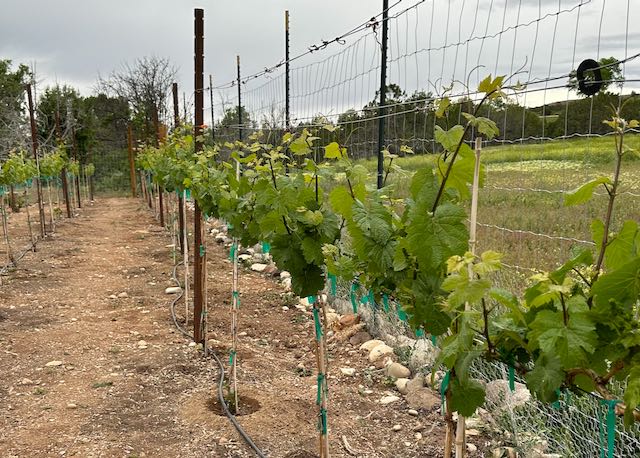Weed Management in Organic Vineyards (UC Integrated Pest Management)

If you choose not to use synthetic pesticides, then your goal should be to maintain the vineyard as clean as possible. Weeds serve as an excellent host for insect pests fungal pathogens and should be routinely controlled by all grape growers. Vineyards differ from orchards in that the foliage and fruit in vineyards are typically much closer to the ground.
While perennial weeds are definitely considered more of a problem, annual weeds, such as horseweed (marestail) (Conyza canadensis), are capable of growing within the vinerow up to the clusters to a height of six feet in a single season and serve as a host for disease. Weed control in organically managed vineyards requires special attention to prevent weed problems before they start. Cover crops planted in the row middles and mechanical control of weeds in the vine rows are key components of an organic weed management program. In some cases, particularly where the weed population is high, it may be desirable to use conventional herbicides for the first couple of years after planting and then transition into organic production. This usually helps to reduce weed pressure, making weed management easier once organic certification has been obtained.
Weed Management Before Planting
It is important to have little or no weed competition at the time of planting vines. This makes weed control before planting critical. Take measures to deplete the soil weed seed bank. A summer fallow treatment of irrigation (to encourage weed seed germination) followed by tillage (to uproot newly emerged weed seedlings) will desiccate weeds and reduce the number of weed seeds in the soil. Repeat this cycle several times to further deplete weed seeds in the soil. Alternatively, weed seeds located in the top four inches of soil can be buried with a soil-inverting plow such as a Kverneland plow to depths from which seeds cannot emerge. Here, the soil should not be deep-plowed again for at least three years to help prevent bringing up viable seed. A moldboard plow will not sufficiently invert the soil to be effective.
Soil Solarization
Soil solarization can be used in the area planned for vine rows to significantly reduce weed populations. The soil in the area designated for solarization must be moist and at least six feet wide in each row. The plastic should be buried on all sides to create a seal on the soil and help prevent the plastic from being blown away by wind. Machines are available that lay down the plastic and automate this otherwise labor-intensive process.
In areas where summer fog is not a concern, solarization should begin when day length is as long as possible, or at least be started by the beginning of August to have sufficient time (4 to 6 weeks) to complete the process. Use clear plastic with a UV inhibiting component to prevent breakdown before the process is completed. Black plastic suppresses weed seed germination but will not heat the soil sufficiently for solarization. Solarization may not be successful in suppressing species like nutsedge. The plastic should be removed before planting the vines.

